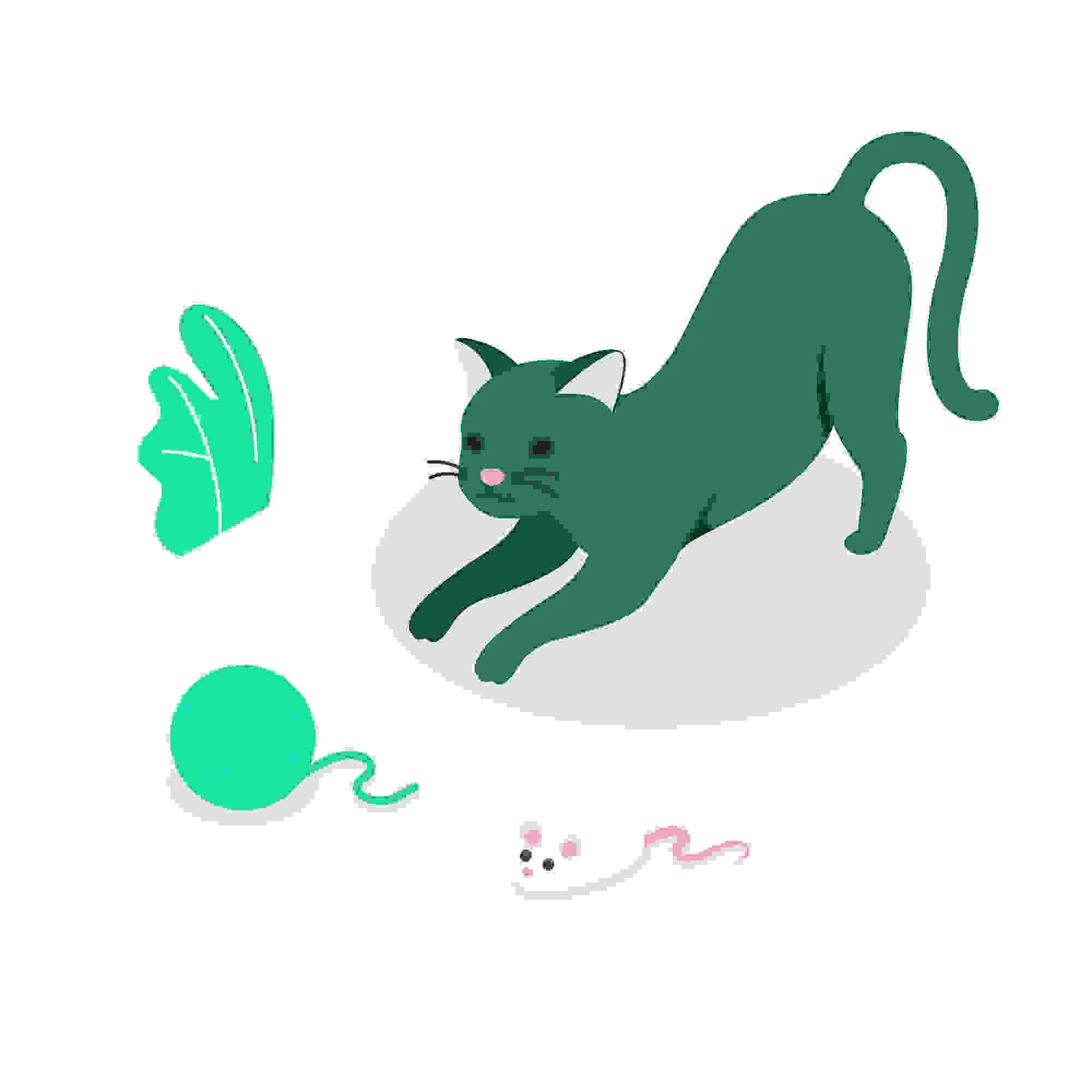Cats’ Playful Behavior – Table of Contents
Introduction
Cats’ playful behavior always brings a smile to our faces when it comes to our feline friends. From chasing laser pointers to pouncing on imaginary prey, cats engage in a wide range of behaviors that often leave us both amused and curious. But have you ever wondered what’s behind these adorable and sometimes puzzling actions? In this article, we’ll delve into the world of cats’ playful behavior, decoding the reasons why they behave the way they do.
The Evolutionary Roots of Play
Hunting Instincts at Play
One of the key factors driving cats’ playful behavior lies in their evolutionary history as skilled hunters. Kittens start exhibiting playful behaviors as early as a few weeks old, mimicking the movements and actions that will later become crucial for hunting. Pouncing, stalking, and batting at objects are all part of a cat’s natural instincts, honing their skills for survival in the wild.
The Benefits of Play
Physical Exercise and Health
Play isn’t just about entertainment—it serves a vital role in a cat’s overall health and well-being. Regular play sessions help cats maintain a healthy weight, improve muscle tone, and enhance their cardiovascular fitness. Engaging in play can prevent obesity-related health issues and keep joints supple, ensuring a longer and more active life.
Mental Stimulation and Enrichment
Intelligent beings, cats require mental stimulation for their well-being and flourishing.Playtime provides an opportunity for them to challenge their minds and keep boredom at bay. Puzzle toys, interactive games, and rotating toys can all contribute to preventing behavioral problems that may arise from a lack of mental engagement.
Deciphering Playful Behaviors

The Chase and Pounce
Ever dangle a string in front of your cat only to see them go wild with excitement? The chase-and-pounce behavior is a manifestation of a cat’s predatory nature. They’re hardwired to react to moving objects, making this type of play a way to satisfy their hunting instincts.
Ambush and Hide
Cats have a natural inclination to hide and ambush, whether it’s stalking a fellow feline or pouncing on an unsuspecting toy. This behavior harks back to their wild ancestors who relied on surprise attacks to catch their prey.
The Role of Age in Play
Kittens vs. Adult Cats
While play is common across all ages, the type of play and its intensity can differ. Kittens engage in more energetic play to develop their skills, while adult cats might prefer shorter bursts of activity. Understanding your cat’s age-related play preferences can help you provide suitable toys and activities.
Fostering Healthy Play
Creating an Enriching Environment
To encourage play, it’s essential to create an environment that stimulates your cat’s senses. Offer a variety of toys that mimic different types of prey, such as feathers for birds and soft, squeaky toys for rodents. Rotate toys regularly to prevent boredom.
Interactive Playtime
As a cat owner, you play a crucial role in engaging your feline friend. Spend quality time each day playing with your cat, using interactive toys like feather wands, laser pointers, and puzzle feeders. Not only does this strengthen the bond between you and your pet, but it also provides the necessary mental and physical exercise.
The Curious Case of Catnip
The Catnip Connection
Catnip, scientifically known as Nepeta cataria, has a fascinating influence on feline behavior. When exposed to catnip, some cats become euphoric, rolling around, rubbing against the plant, and exhibiting an almost trance-like state of contentment. This behavior is inherited from their wild ancestors, who used certain plants to mark their territory and alleviate stress. Catnip’s active compound, nepetalactone, triggers sensory receptors in cats, creating a temporary sense of euphoria.
Not All Cats Are Equal
Interestingly, not all cats respond to catnip. Sensitivity to catnip is inherited, and roughly 50-70% of cats possess the gene that makes them responsive to its effects. Kittens and older cats tend to be less affected, with the most intense responses occurring in cats aged 3 to 6 months.
Nurturing Play in Indoor Cats
Combatting Boredom
Indoor cats often have fewer opportunities for natural exploration and hunting, which can lead to boredom and even behavioral issues. Engaging your indoor cat in play is crucial to prevent them from becoming lethargic or anxious. Interactive playtime not only provides exercise but also alleviates stress and stimulates their minds.
Puzzle Feeders and Interactive Toys
To add an extra layer of engagement to your cat’s playtime, consider puzzle feeders and interactive toys. These toys dispense treats or kibble when manipulated, encouraging your cat to “hunt” for their food. This taps into their natural instincts and keeps mealtime interesting and mentally stimulating.
Conclusion
In the world of our playful feline companions, every pounce, chase, and hide-and-seek has a purpose deeply rooted in their evolutionary past. Understanding the reasons behind these behaviors allows us to provide them with a fulfilling and enriched life.
So the next time your cat chases a toy or hides in ambush, remember that you’re witnessing a glimpse into their wild instincts, brought into your home.Deciphering the code of cats’ playful behavior is a rewarding journey into their wild heritage.
From hunting instincts to the influence of catnip, every pounce and play session tells a story of their evolutionary past. By nurturing their natural behaviors through interactive play and enriching environments, we not only ensure their physical well-being but also forge a stronger bond between us and our feline companions.

